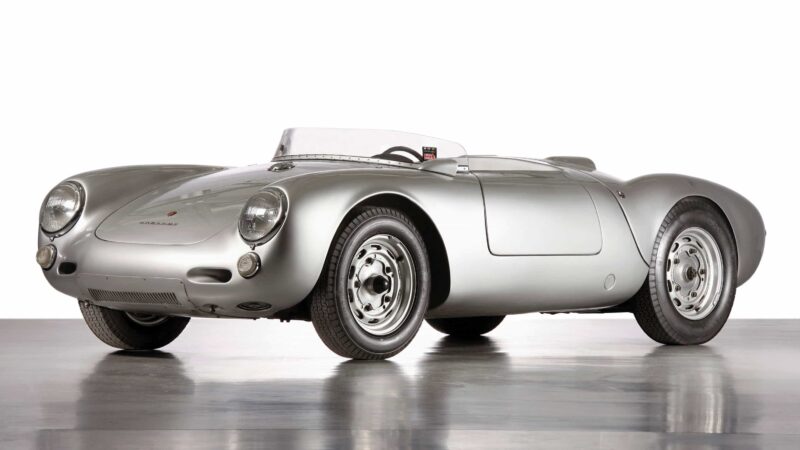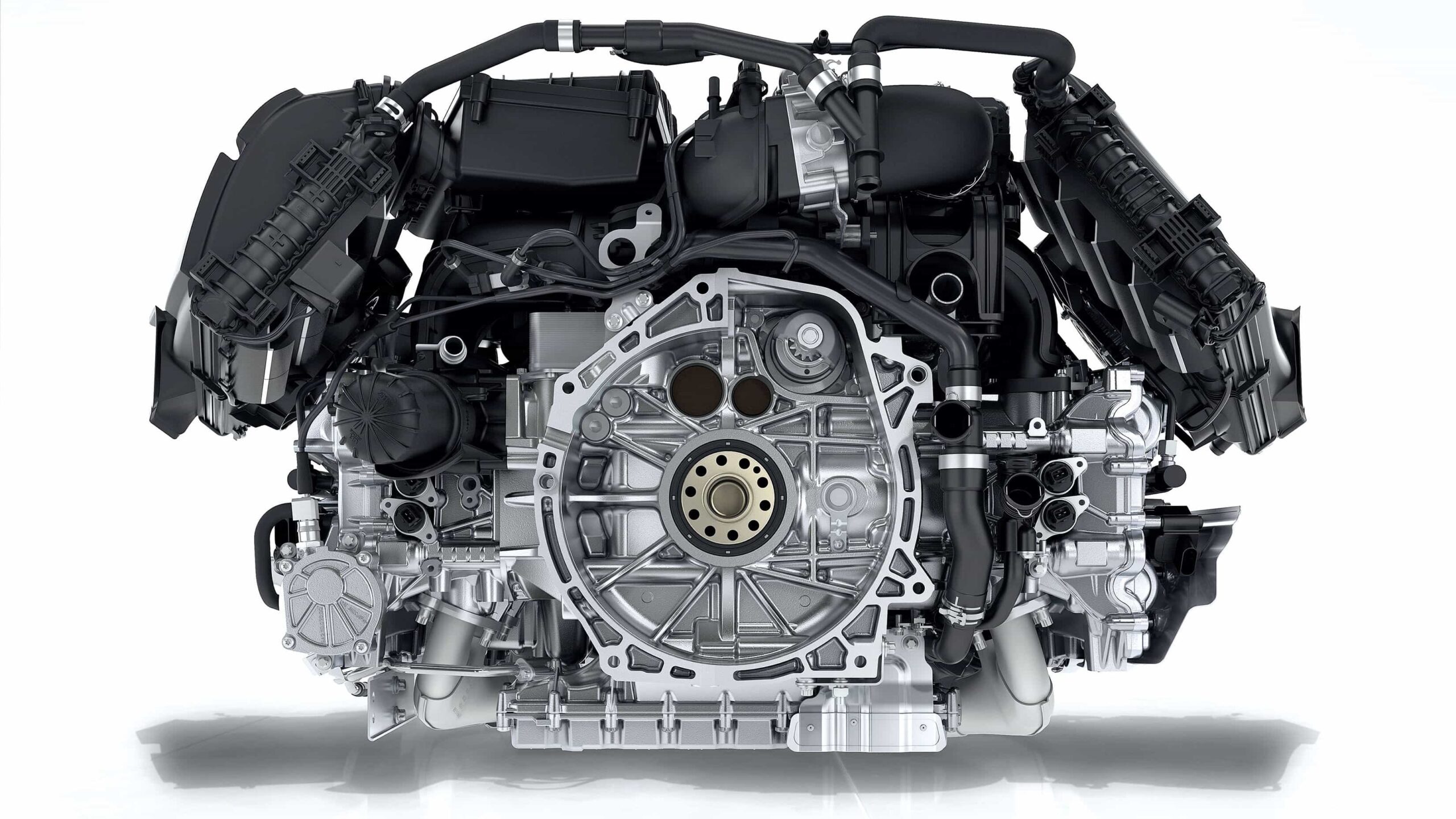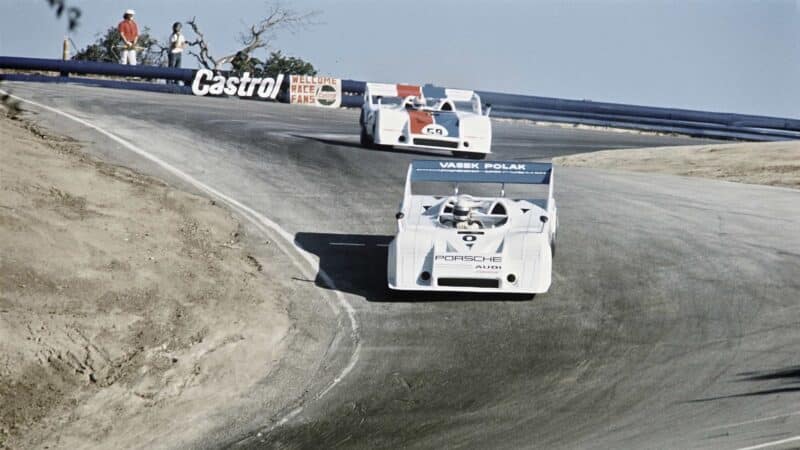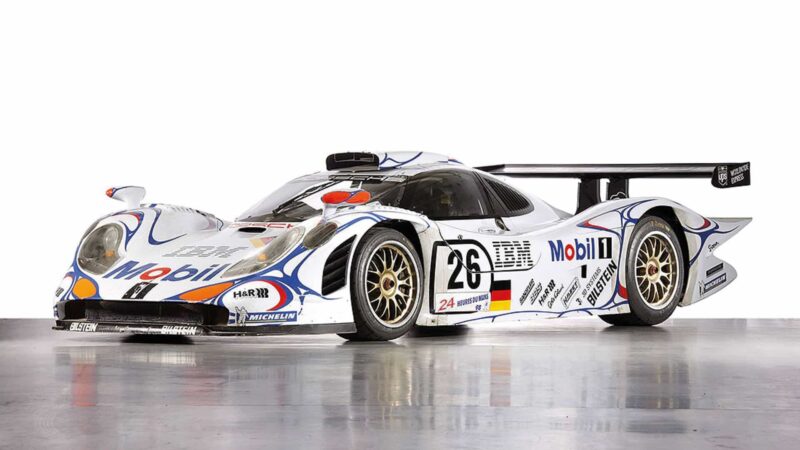Porsche’s Engine Evolution: From VW Flat-Fours to Flat-Six Powerhouses
The power behind Porsche’s early racing success was its innovative, efficient boxer engines. Lawrence Butcher examines how a VW Beetle engine evolved into the flat-12 at the heart of its monstrous Le Mans-winning 917

Porsche The 550 Spyder pioneered the use of the flat-four Boxer engine in racing before its heart evolved into the monstrous flat-12 found in the likes of the 917
Ferdinand Porsche may be famed for many things, but for most the name is more commonly associated with just one engine type, the flat-six. From the 911 to the 962 Group C cars, flat sixes are synonymous with Porsche. It would, however, be remiss to ignore the 4, 8, and 12-cylinder variants that secured much of the company’s early racing success. Of course, the boxer layout isn’t unique to Porsche; Ferrari, Chevrolet, Subaru and Tatra, to name a few, have all used the layout, and it is the last of these names that holds the key to the Porsche design’s murky beginnings.

When sketching out the KdF Wagen – AKA the Beetle – back in the early ’30s, Ferdinand Porsche could not help but notice the work being undertaken by Czech designer Hans Ledwinka on the Tatra V570, which featured a lightweight, rear-mounted, air-cooled flat four. Porsche had his then engine designer Joseph Kales draw up a similar motor, which would later be refined by Franz Xaver Reimspiess when the KdF-Wagen was adopted as Hitler’s favoured ‘Peoples’ Car’. Tatra took exception to this and started legal proceedings against Volkswagen in 1937. These were curtailed when Germany invaded Czechoslovakia and took over the factory; post-war VW would end up paying damages to Tatra.

Briton Attwood and Herrmann’s Salzburg-entered 917K beat the elements to score Porsche’s first Le Mans win in 1970
Glossing over the legalities of its genesis, the humble VW flat-four laid the foundations for the engines that would power multiple Le Mans-winning sports cars. It merged simplicity with what for the time was an advanced design thanks to its lightweight, all-alloy construction and use of high-quality parts, such as a forged steel crank, where it mattered. The diminutive motor only displaced 995cc and made 25bhp but could run all-day at maximum rpm reliably. Post-war, it would form the starting point for Porsche’s engines once the company became a manufacturer in its own right.
Ferdinand Porsche died in 1951, having suffered ill health since his release from captivity after the war (he was arrested by the French) and it was left to son Ferry to develop the company’s fledgling model line-up. Porsche’s first production car, the 356, was released in 1952 and its engines shared much in common with the VW, using the same block but with revised internals and cylinder heads. It would be in 1953 that the first truly remarkable Porsche engine arrived, the jewel-like Type 547, better known today as the Carrera. The complexity of this diminutive motor is now legendary. At 1498cc, it utilised twin-overhead camshafts on each cylinder bank, driven by an astounding combination of nine shafts, 14 bevel gears and two spur gears. Assembling each engine took 120 hours, and the first ones made 112bhp at 6400rpm, though in later iterations capacity and power would rise to 2-litres and 180+bhp.
The four-cylinder would serve Porsche well through the 1950s and into the early ’60s, netting an array of class wins in sports car racing and seeing use in F2 competition. However, the 1960s would be the decade when things got interesting, by the end of which, the Stuttgart marque would be dominating the international sports car scene with its fearsome 917s, packing flat-12 power.

The march to many cylinders began in 1960, when engine designers Hans Mezger and Hans Horich penned a flat-eight, 1500cc engine for Porsche to take grand prix racing. The engine entered competition in 1961, and helped Porsche secure third place in that year’s constructors’ championship, but it couldn’t topple Lotus and Ferrari. However, the eight-cylinder made an ideal basis for a sports car, and in 1962, the 718 W-RS Spyder, and hardtop 718 GTR entered the fray. As the decade progressed, Porsche’s efforts ramped up, culminating in the monstrous, 4.5-litre, flat-12 powered 917.
Porsche played a blinder with the 917. A rule change in sports car racing for 1968 capped prototype cars’ engine capacity at 3-litres. Meanwhile, production cars were permitted 5-litres, the logic being that no one would be mad enough to build the 50 cars required to qualify a prototype as a production machine. However, in late ’68, that figure was cut to 25 and, Ferdinand Piech, Ferry’s nephew and in charge of the company’s racing programme, decided Porsche would construct a 4.5-litre prototype and churn out enough of them to attain production status.
“The only way was up for the Boxer engine in sports car racing”
Mezger created an engine that was dripping with innovative engineering. Sandwiched within its magnesium alloy crankcase was an eight main bearing crank, with a centre feed oil supply and each pair of connecting rods sharing a common journal, allowing for the length to be kept relatively short. Despite this, vibrations due to the natural harmonics of the crank were still a concern. Mezger’s solution? Take drive from the centre of the crank where there were effectively no vibrations.
A 22mm shaft (later changed to a 24mm, titanium production) ran along the bottom of the engine to the clutch, driven via a pinion at the centre of the crank, while the cam and distributor drive used a shaft running along the top of the engine, which also drove the cooling fan, mounted flat atop the crankcase. In a paper he wrote on the engine’s development in the early ’70s, Mezger remarked that, “there is no doubt that the more complex central drive of the 917 was worthwhile. Almost no problems were encountered during the development of the different [ancillary] drives and this is mainly due to the central drive design concept.”

After being regulated out, 917s lived on in Can-Am, becoming dominant.
Impressively, Mezger also said that the 912 engine (as it was designated, not to be confused with the road car) was the most efficiently cooled of all Porsche’s racing engines to date. The 3-litre 8-cylinder in the 908 took 14bhp to cool with a power output of 360bhp, while the ultimate iteration of the 912 only needed an extra 3bhp, yet produced 630bhp. Every element of the engine was optimised, even down to the special steel used for the bolts securing the 12 individual cylinder heads, called Dilavar, which had the same coefficient of thermal expansion as the magnesium parts. These bolts were also wrapped in fibreglass insulation, to prevent cooling air chilling them more than the main engine structure.
Coupled with the ultra-lightweight, low-drag and frankly, terrifying 917 chassis, Porsche had a sure-fire winner on its hands. However, the car’s debut season in 1969 was a disappointment, and it played second fiddle to the nimbler 908. At the race that really mattered – Le Mans – tragedy struck as gentleman 917 driver John Wolfe was killed at Maison Blanche on the first lap, while an oil leak and transmission trouble would waylay the two works machines. Ford went on to take its final victory with the now long in the tooth GT40, Jacky Ickx winning by just 100m from Hans Herrmann’s 908.

The Le Mans-winning GT1-98, the last of the Boxer breed
Le Mans 1970 was a different story. After stiff competition from Ferrari’s 512 in practice, come the race torrential rain wrought havoc on the field (there would only be seven ranked finishers), Herrmann and Richard Attwood held their nerve and took a 4.5-litre-engined 917K – a more refined car than the ’69 iteration – to victory, after the more potent 4.9-litre cars developed for the new season expired by the 12-hour mark. 1971 would be a repeat performance with a win for the #22 Martini-entered 917K of Helmut Marko and Gijs van Lennep, setting a distance record that would not be beaten until Audi’s victory in 2010.
Rule changes killed off the 917 in the World Sportscar Championship for ’72, but it found a home Stateside with the no-holds-barred Can-Am series. Now turbocharged (which was chosen as the favoured power-adding route over development of the 16-cylinder version, only ever built as a prototype), the 917/10 run by Roger Penske finally ended McLaren’s decade-long winning streak in the series.
From then on, the only way was up for Porsche’s boxer layout in sports car racing. Six-cylinders and turbocharging would prove a winning combination in the 936, then 956 and 962 models, securing 11 more wins at Le Mans by the end of the 1980s. However, times moved on and though Porsche’s flat-six has secured countless class wins since, the last overall victory for a boxer would come in 1998 with the GT1. The marque’s most recent glories were secured by another technological marvel; the 919’s V4 and associated hybrid system. Might we see a flat-six return for its upcoming LMDh campaign in 2023, unlikely, but you never know?
